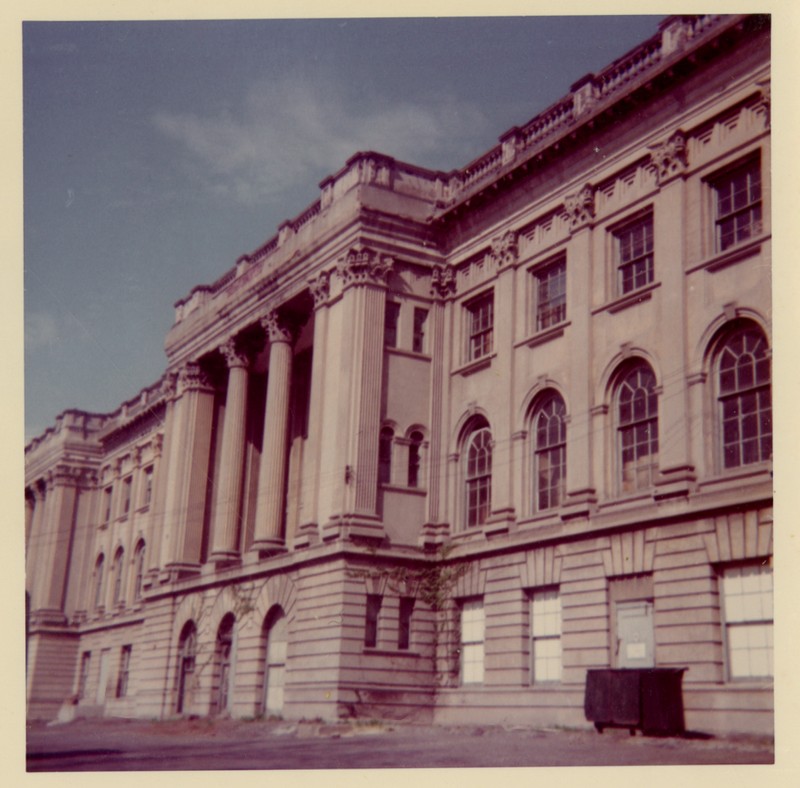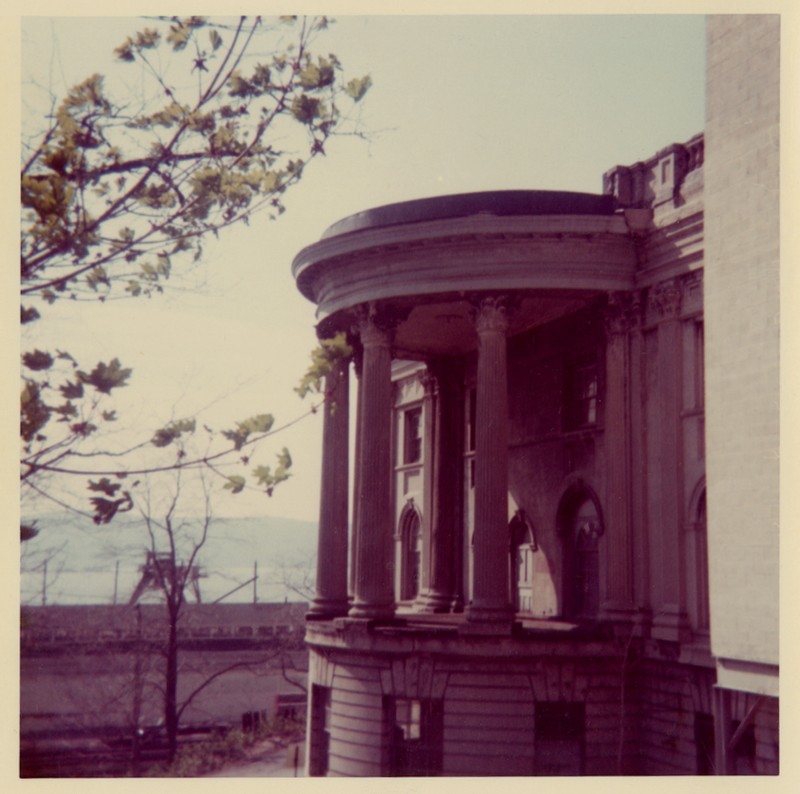Cosmopolitan Building
Introduction
Text-to-speech Audio
Situated on 50 South Buckhout Street in Irvington, NY, the Cosmopolitan Building is a three-story office building designed in the Classical Revival style. The building was modeled after the Vanderbilt Mansion in Hyde Park. The building has several key features: Corinthian columns on the north, south and west facades accented by fluted pilasters, three projected bays on the west elevation with elevated semi-circular porches on the north and south ends of the building with two story colonnades, six-over-six windows, and two small domes on the rooftop. The building was constructed with a steel frame and brick-bearing walls with lightweight cementitious coating to make the exterior appear as cut stone. Originally, the building was designed with three roof domes. The name comes from the Cosmopolitan magazine, whose owner, John Brisben Walker, wanted an office close to his home in Irvington. However, the magazine left Irvington in 1905 when William Randolph Hearst purchased the company.
Images
Cosmopolitan Building from the West, 2016

Cosmopolitan Building, circa 1972

Cosmopolitan Building, circa 1972

Cosmopolitan Building, 1977
%5B1%5D.jpg)
Detailing of the Cosmopolitan Building, 1977
%5B1%5D.jpg)
Window of the Cosmopolitan Building, 1977
%5B1%5D.jpg)
View of one of the dome roofs, 1977
%5B1%5D.jpg)
Backstory and Context
Text-to-speech Audio
The Cosmopolitan Building is the only example of an industrial building in Westchester County which was designed entirely in a full-blown Neo-Classical Revival style. According to Frank E. Sanchis this style, “was used almost exclusively for public and domestic buildings.”
The building was constructed to serve as an office for John Brisben Walker’s newly purchased Cosmopolitan magazine. He purchased the land during the summer of 1894, as well as an adjacent piece of land for his home. He made the move out of the city because his thirteen-year-old son, Randolph, was stabbed and seriously wounded near Columbus Avenue and 101st Street while running an errand. Construction began in 1895 on the building. Stanford White was the architect and designed the building while in a partnership with firm McKim, Mead, and White. Design fees for the firm were expensive, however the cost for the design of the building was only $413. The building finished construction in 1896 and provided 85,000 square feet (2 acres) of space. Cosmopolitan moved in the same year.
Approximately 110 employees worked at the company, manning 21 printing presses that were operated and maintained by 2-man crews. The skills of the employees ranged from pressmen laborers to specialist positions such as bindery operators, engravers, machinists, sorters, folders, typesetters, and clerks. All of these employees were treated well, as Walker pledged fair treatment for the employees and allowed labor unions to negotiate labor contracts with the magazine.
A proponent rural life, Walker encouraged his workers to embark on an exodus from the city and move to Irvington. An article of the time asked, “why should a large force of employees be compelled to suffer all the disadvantages of city life−narrow, badly lighted workshops, small tenements, hot streets, high rents, noise, and crowded schools for their children?” Many of the workers for Cosmopolitan moved to Irvington and rented out cottages within walking distance of the building. Walker kept the same wages as in the city. Despite the move to Westchester, the company saved $1,600 in monthly expenses.
Due to financial issues at the turn of the century, Walker sold the Cosmopolitan Magazine company to William Randolph Hearst in May of 1905. He continued to own the building, as Hearst moved the company back into the city. The building was leased out for several years and then sold in 1915; then sold again to a metal manufacturer for $100,000. Walker only recouped $40,000 from the initial sale. The building served as a movie studio for a while and then went into cycles of vacancy.
During the Second World War, the building served as a radio oscillator manufacturer, which led to negative alterations to its structure, and today, it serves as a commercial office space for small businesses and is now known as the Trent Building.
Sources
[1] “Irvington Historic District.” National Register of Historic Places. United States Department of the Interior/National Park Service, November 29, 2013. https://npgallery.nps.gov/pdfhost/docs/NRHP/Text/13001095.pdf.
[2] Landers, James. The Improbable First Century of Cosmopolitan Magazine. Columbia: University of Missouri Press, 2010.
[3] Sanchis, Frank E. American Architecture: Westchester County, New York: Colonial to Contemporary. Croton-on-Hudson, NY: North River Press, 1977.
Beyond My Ken, Wikimedia (https://upload.wikimedia.org/wikipedia/commons/4/4b/Cosmopolitan_Building_Irvington_from_west.jpg) License CC BY-SA 4.0 (https://creativecommons.org/licenses/by-sa/4.0/)
Westchester County Historical Society
Westchester County Historical Society
Westchester County Historical Society
Westchester County Historical Society
Westchester County Historical Society
Westchester County Historical Society
